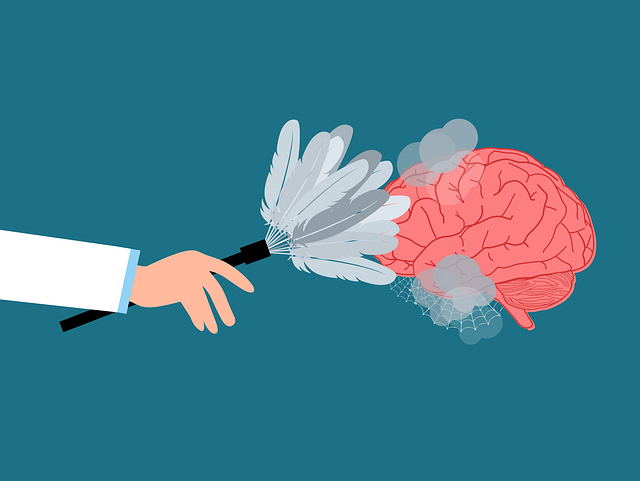Healthcare provider burnout, caused by high workload and emotional demands, leads to physical & emotional exhaustion, cynicism, and reduced job satisfaction. Innovative solutions like Littleton Exposure and Response Prevention Therapy (LERP) help professionals manage stress responses, develop healthier coping mechanisms, and reduce burnout triggers. Holistic strategies including LERP, empathy-focused initiatives, self-care practices, peer support, and organizational culture changes are crucial for maintaining high care standards, job satisfaction, and long-term well-being in healthcare settings.
Healthcare provider burnout is a growing concern, impacting not just individuals but the entire healthcare system. This article explores comprehensive strategies to prevent burnout, focusing on the unique role of Littleton Exposure and Response Prevention Therapy (LERP). We delve into the causes and symptoms, offering insights on creating supportive work environments, implementing self-care practices, and organizational strategies. By understanding these approaches, healthcare facilities can foster resilience and ensure long-term well-being for their staff.
- Understanding Healthcare Provider Burnout: Causes and Symptoms
- The Role of Littleton Exposure and Response Prevention Therapy (LERP) in Burnout Prevention
- Creating a Supportive Work Environment to Foster Resilience
- Implementing Self-Care Practices for Long-Term Well-being
- Organizational Strategies for Burnout Prevention Across Healthcare Settings
Understanding Healthcare Provider Burnout: Causes and Symptoms

Healthcare provider burnout is a growing concern within the medical community. It occurs when healthcare professionals experience prolonged stress and emotional exhaustion, leading to decreased job satisfaction and potential negative impacts on patient care. The causes are multifaceted, often stemming from high workload, long shifts, emotional demands, and limited control over work processes. Healthcare providers may struggle to maintain work-life balance, especially in environments like hospitals or emergency departments where shifts can be unpredictable and demanding.
Symptoms of burnout include physical and emotional exhaustion, cynicism or detachment from patients and colleagues, and feelings of ineffectiveness or inadequacy. This can manifest as increased irritability, sleep disturbances, changes in appetite, and even physical health issues. Recognizing these signs early is crucial to implementing prevention strategies. Effective interventions include Mental Health Awareness programs, resilience-building workshops, and evidence-based therapies such as Littleton Exposure and Response Prevention Therapy (ERPT), which focuses on helping healthcare providers manage stress responses and develop healthier coping mechanisms. Additionally, Mental Wellness Journaling Exercise Guidance can empower professionals to process their experiences and emotions constructively.
The Role of Littleton Exposure and Response Prevention Therapy (LERP) in Burnout Prevention

Burnout among healthcare providers is a growing concern, but innovative approaches like Littleton Exposure and Response Prevention Therapy (LERP) offer promising solutions. LERP focuses on addressing the root causes of stress and anxiety by helping professionals confront and manage challenging situations in a controlled environment. This therapy facilitates the development of empathy building strategies, allowing caregivers to connect with their emotions and gain perspective on their responses, ultimately reducing burnout triggers.
Integrating LERP into healthcare settings complements existing mental health education programs design efforts. By teaching coping mechanisms and resilience, it empowers providers to cultivate a healthy self-care routine for better mental health. This proactive approach not only benefits individual practitioners but also enhances the overall quality of patient care within healthcare institutions.
Creating a Supportive Work Environment to Foster Resilience

In healthcare, creating a supportive work environment is essential for preventing burnout and fostering resilience among providers. This involves implementing strategies that prioritize empathy building and community outreach program implementation. By cultivating a culture where healthcare professionals feel valued, heard, and connected to their colleagues, institutions can enhance job satisfaction and reduce stress levels. Empathy-focused initiatives, such as regular check-ins and debriefing sessions, allow medical staff to process challenging experiences and develop healthy coping mechanisms.
Additionally, offering mental health resources and utilizing evidence-based practices like Littleton Exposure and Response Prevention Therapy (ERPT) can significantly contribute to resilience building. ERPT, for instance, equips healthcare providers with skills to manage stress and anxiety associated with high-pressure work environments. Through these initiatives, healthcare organizations can ensure their staff members thrive, providing quality care while maintaining a healthy work-life balance.
Implementing Self-Care Practices for Long-Term Well-being

In the healthcare sector, preventing burnout among providers is paramount to maintaining a high standard of care and patient satisfaction. One effective strategy is to embed self-care practices into the routine of healthcare professionals. This involves recognizing and prioritizing personal well-being as an integral part of professional life. By adopting strategies such as regular exercise, mindfulness meditation, or engaging in hobbies outside of work, providers can reduce stress levels and enhance their resilience. Additionally, seeking support from peers or participating in therapy, like Littleton Exposure and Response Prevention Therapy, offers valuable tools to manage challenging emotions and prevent burnout.
Regular self-care not only benefits individual healthcare providers but also contributes to a positive organizational culture. It fosters an environment where professionals feel supported and empowered, leading to improved job satisfaction and productivity. Incorporating these practices alongside Healthcare Provider Cultural Competency Training and implementing Mood Management and Stress Reduction Methods can create a comprehensive burnout prevention strategy. Such initiatives ensure that caregivers are equipped to handle the emotional demands of their roles while maintaining their long-term well-being.
Organizational Strategies for Burnout Prevention Across Healthcare Settings

Healthcare organizations play a pivotal role in preventing burnout among their providers. Implementing comprehensive strategies can create a supportive environment and enhance well-being. One effective approach is incorporating structured programs like Littleton Exposure and Response Prevention Therapy (LERP), which helps professionals manage stress and anxiety through exposure therapy techniques. This method encourages gradual, controlled encounters with stressful situations, fostering resilience.
Additionally, organizations should prioritize empathy-building strategies to strengthen the patient-provider connection. Public Awareness Campaigns Development can also mitigate burnout by educating the public about healthcare worker struggles, reducing unreasonably high expectations, and promoting a culture of understanding and support. Conflict resolution techniques within teams are essential for managing tensions and ensuring open communication, contributing to a healthier work dynamic and preventing burnout triggers.
Burnout among healthcare providers is a growing concern, but by implementing evidence-based strategies, such as Littleton Exposure and Response Prevention Therapy (LERP), organizations can create a more resilient and supportive work environment. Combining LERP with fostering a culture of self-care, along with organizational initiatives, offers a multi-faceted approach to prevent burnout. These strategies not only enhance the well-being of healthcare workers but also improve patient outcomes and the overall quality of care.














